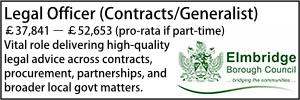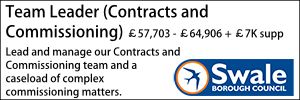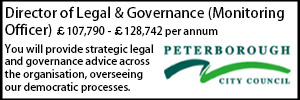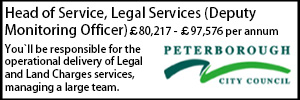In ‘n’ Out – insourcing vs outsourcing
With the launch of the recent Cabinet Office consultation on further reforms to public procurement and the proposal for a public interest test to inform sourcing decisions, Eleanor McClelland considers key issues for contracting authorities when deciding whether to insource or outsource.
- Details
In a nutshell, insourcing involves a contracting authority using its own internal resources and internal expertise to deliver functions to the organisation. In contrast, outsourcing involves the contracting authority appointing third-party suppliers to deliver functions to the organisation.
For the last few decades, long term outsourcing has been a popular method of delivering public services in the UK, but the approach of whether to insource or outsource is often cyclical, as those procuring services seek to get the best value and best quality available for the delivery of its functions. More recently, there have been many examples of contracting authorities successfully bringing service delivery back in-house. One of the key proposals of the consultation on further reforms to public procurement, is the requirement for contracting authorities to make a standard assessment before procuring a major contract. The purpose of the assessment is to gauge whether any proposed outsourcing would be more effectively delivered in-house. It may well be that this marks the advent of a shift in the cycle to a heavy focus on insourcing.
The consultation proposes that this assessment, or public interest test, would be a series of questions, “likely to include (but not limited to):
- appropriate in-house capability;
- evidence of cost savings or service quality improvements;
- whether the service is core to the organisation’s objectives;
- need for greater control or accountability over the service;
- whether the service is a government created market; and
- whether the existing contract/service is performing as expected.”
The consultation closes on 5 September 2025. If the proposal is supported, it is expected to be implemented through an amendment to the Procurement Act 2023 to mandate the public interest test prior to making sourcing decisions on major service contracts over £5 million. Secondary legislation would be made to require contracting authorities to publish the results of the public interest test in a tender notice for transparency.
Any sourcing contract that amounts to the award of the public contract must comply with the public procurement regime. If these proposals are incorporated into that regime, contracting authorities deciding whether to insource or outsource will increasingly find themselves considering a range of factors that involve trade-offs. Experience has shown that, amongst the many considerations involved, some key factors include:
- Operational certainty – when insourcing, contracting authorities may have more control over service delivery and quality, provided appropriate governance is in place to assess and manage outputs. On the flipside, in outsourcing there is loss of direct management control, but third-party suppliers can be held to account through robust service levels, combined with service credits for non-performance. A further consideration is peak periods, which can be challenging when services are insourced and resources may be constrained. In outsourcing, large suppliers are likely to have sophisticated business continuity and disaster recovery plans and a depth of resources to meet unexpected demand challenges. An outsourced supplier may also be able to reset cultural expectations for staff and manage staff behaviours in a more neutral way than the contracting authority itself would. However, the supplier is likely to have its own standard ways of working and the contracting authority should also be aware of whether these are likely to be a good fit with their expectations.
- Ongoing management – when insourcing, continued delivery management obligations are retained by the contracting authority. As this may also include management of sub-contractors and/or agency staff, the contracting authority must have sufficient technical expertise to effectively manage the service. In outsourcing, whilst the operational delivery management will be handed over to the supplier, the contracting authority will need to manage the contractual relationship with the supplier (which may require technical expertise to verify compliance with service levels).
- Transfer of risk – there is little to no transfer of risk with insourcing, except to the degree that external advisors and sub-contractors are used. Instead, contracting authorities may want to consider insurance cover (or levels of self-insurance) for additional risks. In contrast, in outsourcing, day to day responsibility for operational delivery, management of staff and compliance with laws can be transferred to the supplier, who will be keen to negotiate the allocation of risk and resist any that are outside its control.
- Cost – with insourcing, if providing the service requires new assets, IT and recruitment, then these initial overheads need to be taken into account, as will internal costs such as additional insurance, additional management cost, and possible agency staff costs to address peak periods. However, the customer avoids paying a risk premium and a supplier’s profit margin. Market engagement can help identify the financial viability of an outsourced model. The potential margin charged by the supplier will need to be factored in, but increased efficiency from suppliers who specialise in providing this type of service may result in cost savings even with a margin.
- Assets – with insourcing, assets may need to be acquired (or transferred from an existing supplier if one exists) and maintenance and replacement costs should be considered. Transfer of assets may also be a feature of an outsourcing model. Suppliers may be required to support a refresh of equipment and may have better finance terms/purchasing power due to this being their core business.
- Continuous improvement - with insourcing, service improvements need to be developed in-house. However, corporate memory, knowledge and skill development can be retained in-house which may drive value in service delivery or other parts of the business. In outsourcing, continuous improvement can be incentivised through commercial and governance models. Sector expertise and sophisticated back-of-house functions may drive further efficiency or service improvement in outsourced supply and may have access to state of the art models (both in terms of technology and wider ways of working). Suppliers can be held to account through effective, enforceable service levels.
- Reputation - with insourcing, industrial relations risk around a shift in employment terms/pensions treatment needs to be considered and managed. It may be that a contracting authority considers internal service levels to ensure in-house performance is achieved and does not impact on the wider service/policy delivery. These service levels will need to be given teeth, for instance by being linked to the relevant department’s overall performance metrics. In contrast, in outsourcing, there is an inherent reputational risk due to the risk of loss of control of the service if it is not carefully managed. Depending on the nature of the public service, which may be essential to government functioning and public accountability, failures in service delivery could have a significant impact on the contracting authority’s reputation. However, outsourced suppliers will likely have access to deeper resources to improve operational certainty.
- Set up – depending on the nature of the insourcing, operational delivery will need to be transitioned in-house, and infrastructure may need to be updated to provide for this. For outsourcing, the contracting authority needs to have a clear idea of what exactly is included in and excluded from the scope. This will need to be clearly communicated as part of the public procurement process. Legal terms will need to be developed and negotiated, and transfer of staff, assets and intellectual property managed.
- Artificial Intelligence (AI) - not so much a consideration, as an emerging factor at play for contracting authorities in this area is the rapid advance advancement of artificial intelligence which is having an impact on both outsourcing and insourcing strategies, enhancing each approach's distinct advantages:
For insourcing, AI may provide access to advanced capabilities that were previously only economically viable through external providers (thereby potentially strengthening the case for insourcing). AI-driven process automation may make insourced operations more efficient and cost-effective, whilst predictive analytics help internal teams optimise resource allocation and anticipate service demands. In both cases however, AI specific considerations will need to be taken into account; from data governance, algorithmic transparency, to governance and the need for AI-specific expertise, whether sourced internally or externally.
For outsourcing, AI may enable a more sophisticated process for supplier selection; utilising predictive analytics to assess vendor capabilities, risk profiles and/or performance potential (as examples). AI powered platforms also support and facilitate better communication between organisations and service providers (by way of real time dashboards and intelligent workflow management).
As AI continues to evolve, contracting authorities will be able to leverage these technologies to enhance whichever sourcing model best aligns with their strategic objectives and operational requirements.
Looking to the future
The proposal that contracting authorities undertake and publish a public interest test when making sourcing decisions is part of the government’s aim to use the Procurement Act 2023 “to create a simpler and more transparent regime for public sector procurement that delivers better value for money, drives economic growth, and safeguards national interests.” Regardless of whether the proposal is implemented, a contracting authority’s decision as to whether to provide major services in-house or to outsource, is likely to come under increased scrutiny.
The Cabinet Office Sourcing Playbook provides a helpful guide to undertaking sourcing decisions. It includes guidance on outsourcing, insourcing and contracting and is aimed at those who are responsible for the planning and delivery of insourcing and outsourcing services.
The Institute for Government has also published How to approach insourcing and outsourcing, which is a practical guide for ministers who are considering outsourcing or insourcing a service or who are seeking to better understand and evaluate services that have already been outsourced or insourced.
Eleanor McClelland is a Partner in TLT’s Commercial Team.
Contracts & Procurement Lawyer
Trust Solicitor (Employment & Contract Law)
Senior Lawyer - Contracts & Commercial
Lawyer - Property
Locums
Poll







































